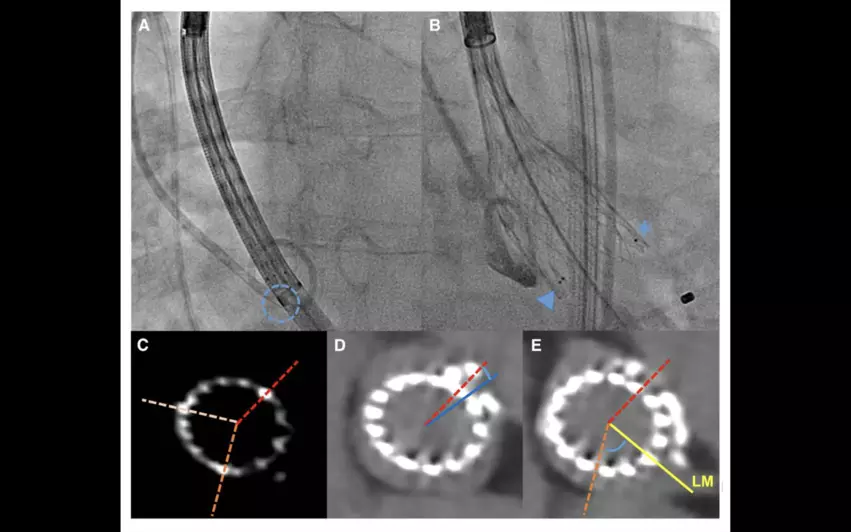New feature found on Evolut FX valve helps cardiologists confirm commissural alignment during TAVR
The Evolut FX supra-annular, self-expanding transcatheter heart valve is associated with key improvements in commissural alignment after transcatheter aortic valve replacement (TAVR), according to new findings published in Circulation: Cardiovascular Interventions.[1] Medtronic officially launched the FDA-approved device back in September 2022.
“TAVR indications have expanded to younger patients with lower surgical risk and longer life expectancy,” wrote lead author Guilherme F. Attizzani, MD, an interventional cardiologist and structural heart disease specialist at University Hospitals Cleveland Medical Center, and colleagues. “Accordingly, lifetime management of cardiovascular disease, including future coronary access and redo TAVR, is increasingly important. Coronary access is affected by multiple factors such as aortic root anatomy, type and implantation depth of transcatheter heart valves and commissural alignment.”
Previous studies had concluded that self-expanding transcatheter heart valves could play a key role in improving commissural alignment. Attizzani et al. aimed to explore that theory, tracking data from 30 consecutive TAVR patients treated with the Evolut FX valve. The Evolut FX valve was designed with special radiopaque markers, visible on X-ray results, that help operators ensure it is properly implanted.
Full captions courtesy of Attizzani et al. (A)The position of 3 markers before the final deployment at cusp overlap view. The 2 markers (arrow) located in the outer curve while another marker (asterisk) was at the inner curve, suggesting commissural alignment on fluoroscopy (B). Postprocedure computed tomography (CT) assessment of commissural and coronary artery alignment (C–E). The 3 markers were identified at inflow part of the Evolut FX valve (C). The angle between native left-right commissure (blue line) and the closest commissure of Evolut FX valve (red dashed line) was measured (D). The angle between left main coronary artery (LM; yellow line) and the closest commissure of Evolut FX valve (orange dashed line) was measured.
All patients underwent post-TAVR CT exams to confirm valve alignment.
Overall, X-rays found that all 30 patients showed commissural alignment. When post-TAVR CT exams were used to confirm these findings, researchers found that 29 or 30 patients had “aligned or mildly misaligned commissures.”
“The new three depth markers of the Evolut FX system help operators confirm the commissural alignment during TAVR,” the authors wrote.
However, the team was unable to draw “robust conclusions” about coronary alignment due to the study’s small sample size. Additional research will be needed to learn more.
The team’s full research letter is available here. Attizzani is a consultant for Medtronic and serves on the company’s advisory board. He is also a consultant for Abbott Vascular.


